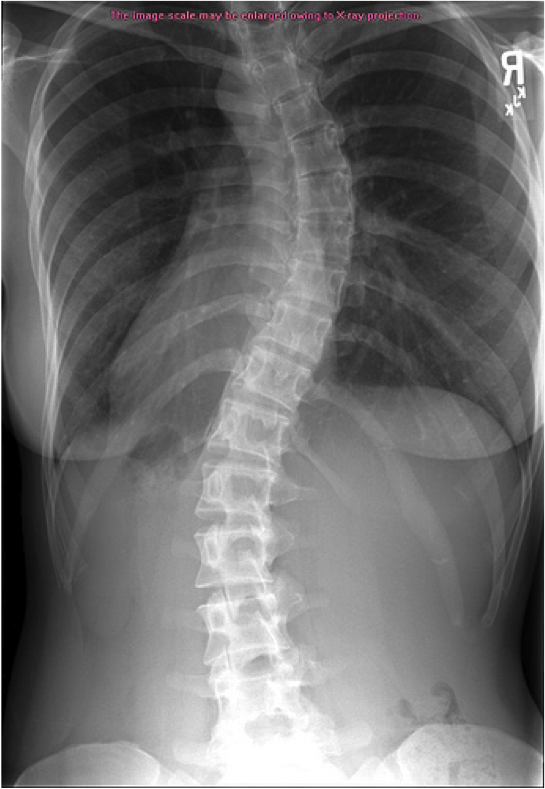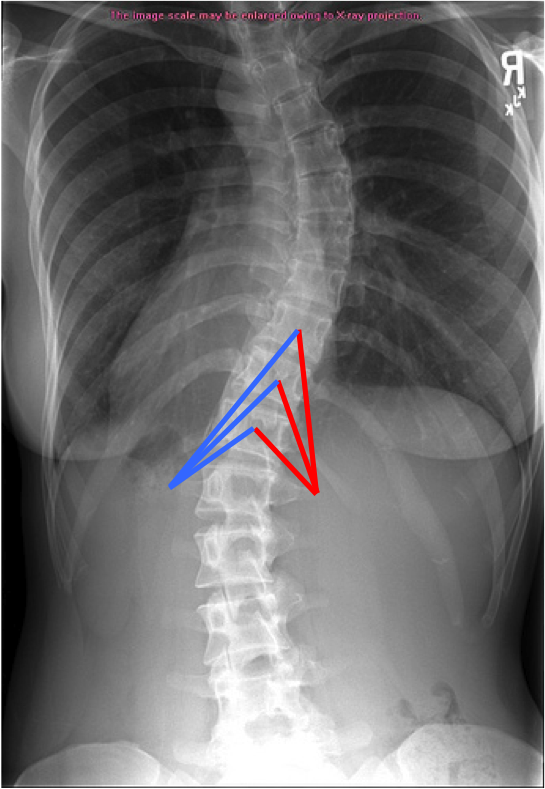Okay, okay. I'll get back to answering your specific yoga therapy questons soon but for now I just have to share some of the amazing insights I have found while studying for this month's Biomechanics of Healing Webinar: Scoliosis edition. It's a real head turner because it literally turns what has seemed the conventional wisdom about muscular imbalance in scoliosis on it's head.
It is not controversial to say that idiopathic scoliosis involves/includes

muscular imbalance. Much of the teaching and books on scoliosis focus on muscular imbalance and use it as a means to specify scoliosis therapies. The controversial issue is the question of which side of the scoliotic curve is stronger and how does that contribute to or deepen the curve? I examine two paradigms to address this question.
Proponents of the first paradigm suggest that it is the concave (non-dominant) side of the curve that is stronger. The popular model for this paradigm is that the concave-side paraspinal muscles pull the vertebrae together on that side creating and maintaining the curve. At first look, it seems to make sense. The concave side is shorter after all!
However, there is a 2nd paradigm that states that the convex-side paraspinal muscles (red, below) are stronger...
the exact opposite view. Researchers arrived at this second paradigm by testing the body's electrical signals (electromyography or EMG), which actually drive the muscles. In these studies, EMG data shows that the convex (dominant) side paraspinal muscles fire stronger and work longer than those on the concave side*. The extra work done by the dominant side paraspinal muscles may be due to the body's attempt to correct the curve. But because these muscles consistently work harder, researchers believe they are the stronger muscles.
Paradigm 2 studies also showed that the most intense difference in

strength occurs at the base of the curve during the early onset years of scoliosis development**. That result strongly suggests that the stronger firing paraspinal muscles pull the superior vertebrae to the dominant side and initiate the convex side of the curve. I am a proponent of the 2nd paradigm and use it for my scoliosis therapies for two reasons. First, paradigm 2 makes more sense to me as a biomedical engineer. The force diagrams work out biomechanically. Second, this paradigm agrees with my own personal observations that the muscles and tissues are bulkier on the dominant side.
I am really excited to share the details of this work next Tuesday, Aug 20, in the
Biomechanics of Healing Webinar: Scoliosis Edition. We will explore the the studies I am citing as well as how I use this knowledge to craft yoga therapies to stall and even reverse scoliosis. I hope to see you there!
Let's Geek,
Martin
* A preliminary study on electromyographic analysis of the paraspinal musculature in idiopathic scoliosis; John Cheung, Jan P. K. Halbertsma, Albert G. Veldhuizen, Wim J. Sluiter, Natasha M. Maurits, Jan C. Cool, Jim R. van Horn, 2005
** Geometric and electromyographic assessments in the evaluation of curve progression in idiopathic scoliosis. 2006: John Cheung; Albert G Veldhuizen; Jan P K Halberts; Wim J Sluiter; Jim R Van Horn, Spine 2006;31(3):322-9